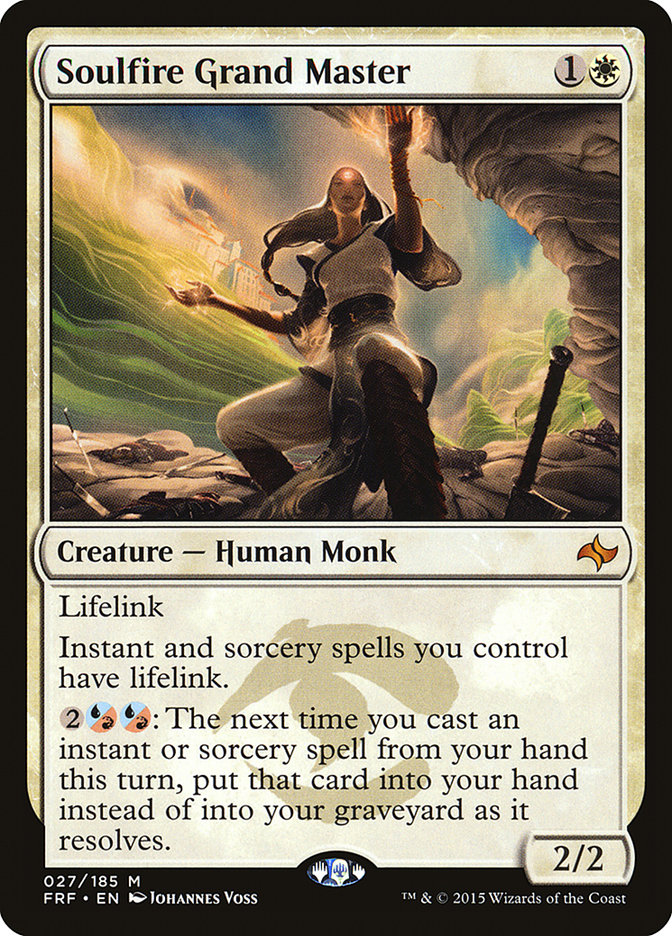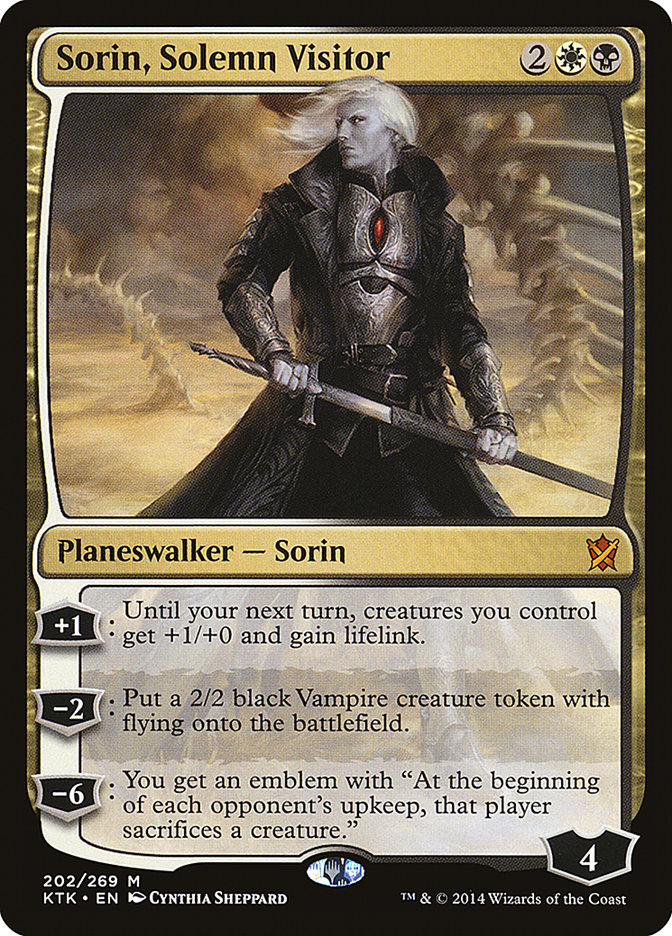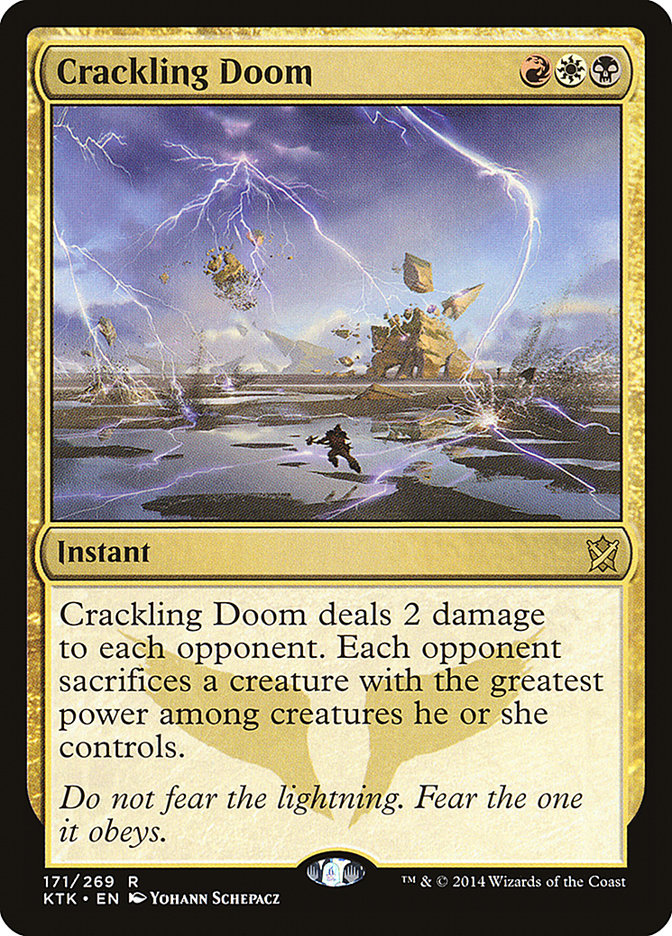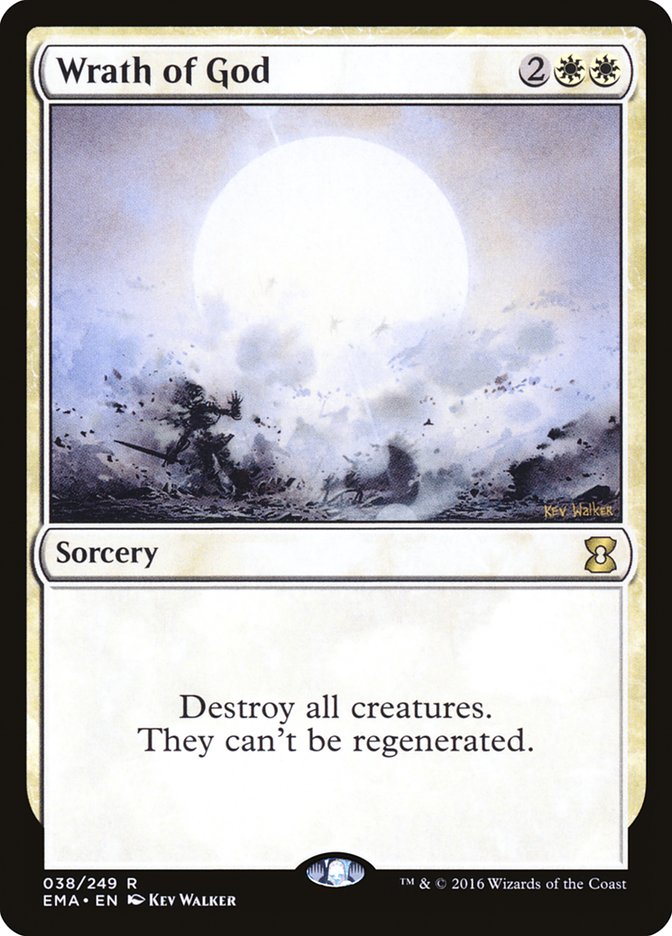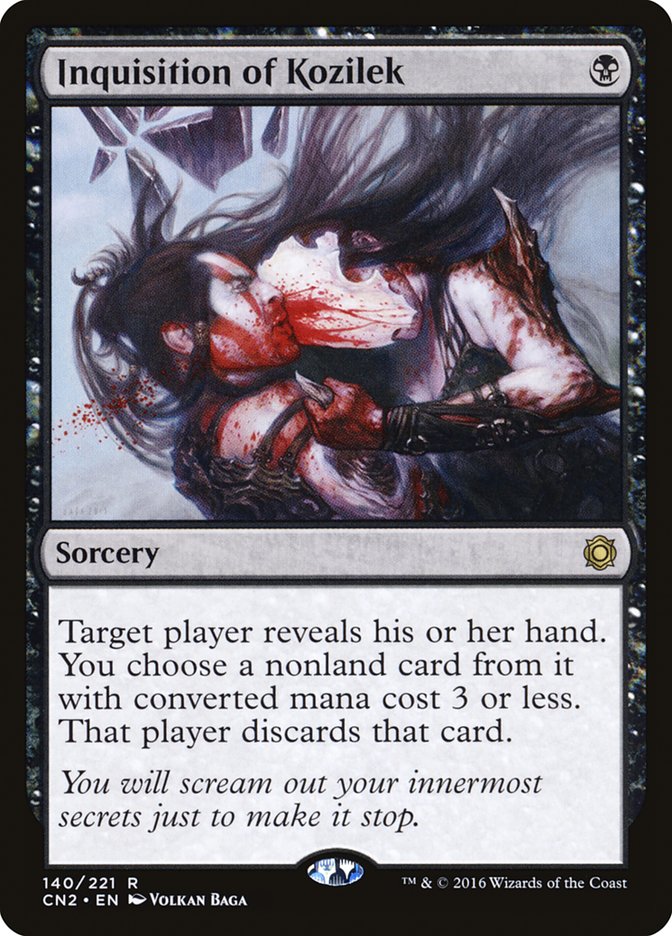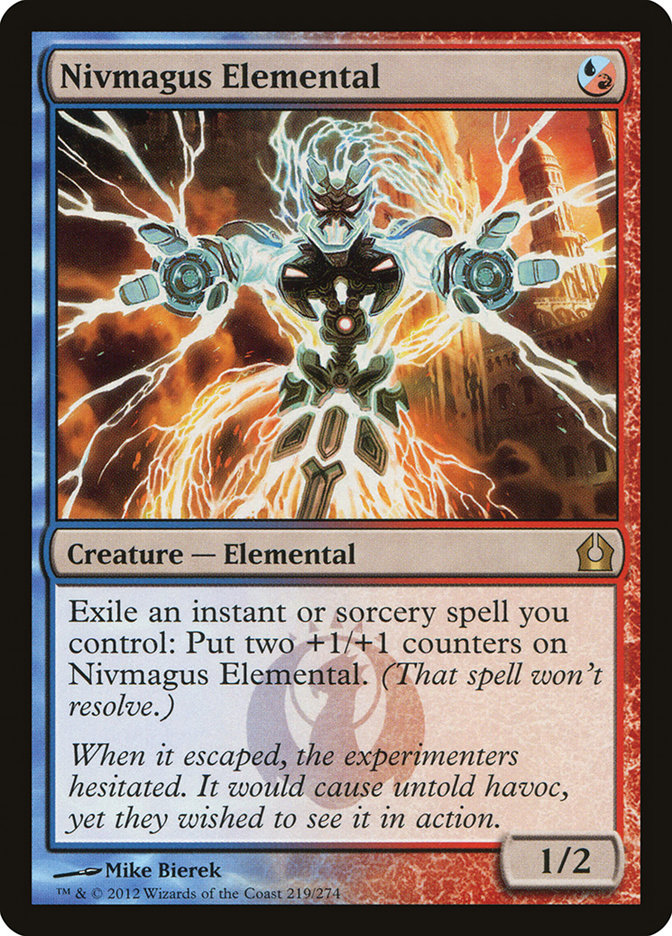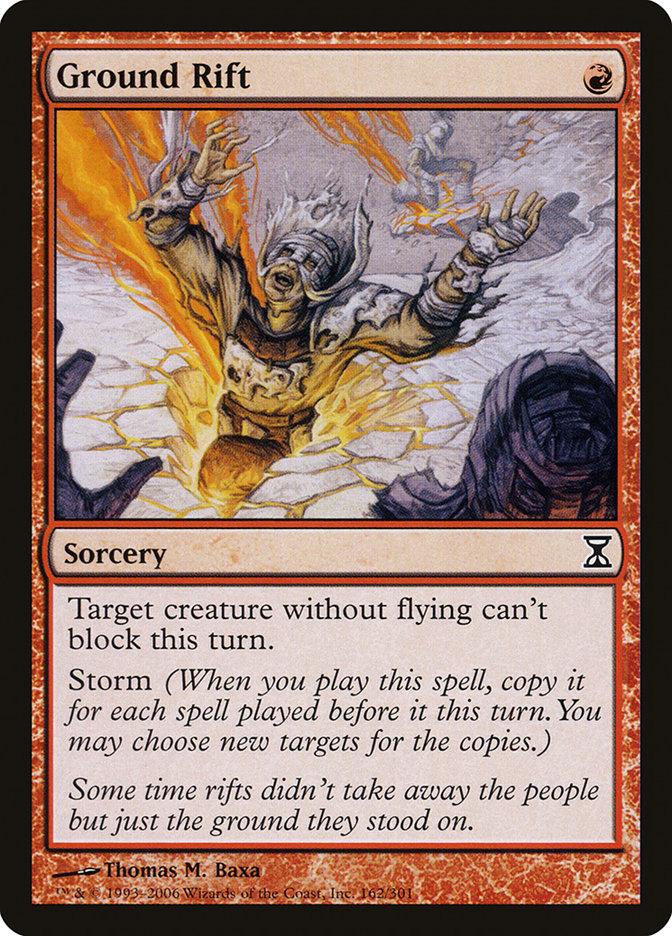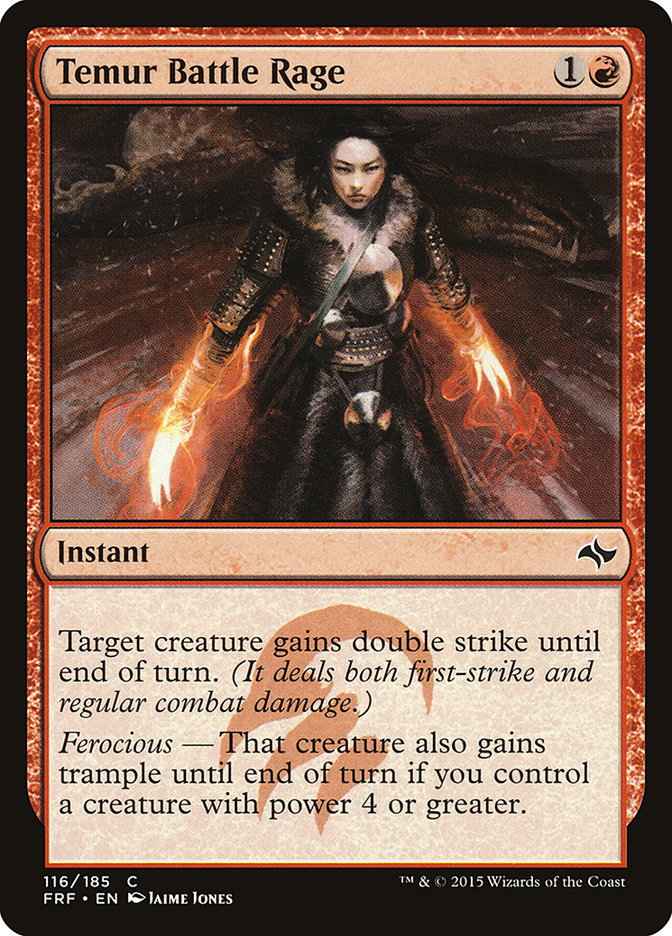Looking through the 5-0 Competitive Modern League decklists in the last couple of weeks, I’ve noticed that there have been several new or at least less-common decks showing up with a theme. Red is on the rise, seeing play in more decks! Here are some of the cool decks from this week that focus on red.
Mardu
Creatures (10)
Planeswalkers (2)
Lands (23)
Spells (25)

Mardu plays much like Jund or Abzan, using hand disruption and removal to keep your opponent down and then attacking with efficient threats to win in the mid-game. Like its name explains, it eschews green for both “other colors” used by Jund and Abzan.
Mardu plays lots of one-for-one answers. It runs Thoughtseize for hand disruption and Lightning Bolt and Path to Exile for removal, amongst others. It uses efficient two-drop creatures with relevant abilities such as Soulfire Grand Master to finish the game once you stabilize the battlefield.
This decklist is relatively balanced between all three colors and runs a lot of fastlands. Because most cards can be cast for three or less mana, it hurts less when lands enter the battlefield tapped late in the game. It has the ability to sideboard into a more controlling role with cards like Crackling Doom or Rest in Peace.
While it runs some cards that are very similar to Jund or Abzan, it also runs some cards that are unique to a Mardu build. Soulfire Grand Master does not see play in Abzan because it has a red/blue hybrid activated ability. This deck is able to take advantage of giving your spells “buyback” late in the game.
Sorin, Solemn Visitor is played over Liliana because this deck plays a more token-based strategy with Lingering Souls. Sorin is a powerful planeswalker that can ultimate on its third turn on the battlefield and take control of the battlefield by itself.
Crackling Doom sees sideboard play in this deck because it has a powerful effect on the battlefield as well as doing some direct damage. Requiring three colors makes it see much less play than some other cards, but when you are already in the right colors, it is great.
One downside to the Mardu list is that it is light on creatures. It does not play any good early blockers, so aggressive decks have an easier time than they would against similar strategies. By cutting green from Jund and Abzan, you lose the ability to play Tarmogoyf or Scavenging Ooze.
A three-color fetch- and shockland manabase is always a liability when you are doing so much damage to yourself to fix your colors. It is also easy to miss a color you need, so sometimes the mana can be a bit inconsistent.
Mardu is built to answer every threat, either with removal or hand disruption, so it does quite well against an open metagame. It takes advantage of Lingering Souls to fill the battlefield and attack or block in the air and Soulfire Grand Master for lifegain to stabilize and outplay other midrange decks.
R/W Planeswalkers
Creatures (8)
Planeswalkers (9)
Lands (24)
Spells (19)

R/W Planeswalkers is a decks built around planeswalkers rather than creatures. The deck technically runs eight creatures, but three of them are Simian Spirit Guide, used as mana accelerants. There is one copy of Emrakul, the Aeons Torn for Nahiri, the Harbinger to tutor up and then four copies of Wall of Omens. The Walls work well in this deck as early blockers and card draw, and they are strong enough not to die to Lightning Bolt or Anger of the Gods.
Four maindeck battlefield wipes and eleven direct damage or removal spells keep the deck’s planeswalkers safe. The burn can also double as reach near the end of the game.
Because this deck is only two colors, one of which is red, it can easily play Blood Moon without hurting itself much. This can sometimes lead to free wins against greedy three-color manabases and other decks that rely on nonbasic lands. Make sure to run plenty of Plains and to fetch them early if you are planning to cast Blood Moon.
This deck wins by leveraging planeswalkers on an empty battlefield and using their abilities to close out the game quickly, either through Nahiri fetching an Emrakul or Ajani casting his own Lightning Helixes.
R/W Planeswalkers is a control deck that uses midrange threats to finish out the game. Planeswalkers are inherently midrange because you are getting multiple effects off a single card. It can side into more targeted control or hate cards but generally continues its primary gameplan post-sideboard.
Many of the planeswalkers in this deck are not played elsewhere. They are good when designed around but are less powerful than some other planeswalkers. Single copies of Gideon Jura and Ajani Vengeant give this deck more flexibility. From the sideboard, Elspeth, Sun’s Champion can make tokens to block a cluttered battlefield if necessary but is more likely to fill it up with creatures after killing all of your opponents’.
There is no countermagic or way to remove combo pieces from an opponent’s hand, making pure combo a challenging matchup. If you don’t draw your early-game removal, fast creature decks can kill you, but you will probably stabilize at a low life total and turn the game around.
This is a Blood Moon deck, so it can hurt other decks’ manabases while not hurting itself. With so much removal, it can easily deal with creatures and is happy going into the late-game. Other late-game decks normally have a fragile manabase, giving R/W Planeswalkers an edge against these decks.
Jeskai Control control plays a copy of Emrakul but does not have enough lands to hard-cast it. This deck has plenty of lands, so in a pinch Emrakul can be cast the hard way.
B/R Goyf
Creatures (11)
Planeswalkers (6)
Lands (23)
Spells (20)

B/R Goyf looks and plays much like Jund with lots of removal and hand disruption. It forgoes Abrupt Decay, Maelstrom Pulse, and Scavenging Ooze for a greater color consistency and the ability to play Blood Moon. It only runs five green spells in the entire 75, including four Tarmogoyf maindeck and one Thragtusk in the sideboard.
B/R Goyf is less aggressive than Jund but is still a reactive midrange deck. It primarily sideboards into lots of specific-deck hate cards.
This deck is very similar to Jund, just shifted more toward two colors and adding Blood Moon. There are no cards that stand out as particularly unique in this deck, but it definitely takes a traditional Tier 1 deck in another direction.
One downside to playing B/R Goyf is that people already know how to play against it. Since it is so similar to a Tier 1 deck, most opponents will likely know what their sideboarding plan will be against you.
It is more consistent and resilient than Jund and has an advantage over it by playing Blood Moon. In general, this deck will likely have an advantage over other midrange strategies, but will be worse against combo decks.
Death’s Shadow Blue
Creatures (12)
Lands (17)
Spells (31)

This is a new variant on Death’s Shadow Aggro, adding more creatures that use instants and sorceries to their advantage. Death’s Shadow and Phyrexian mana remain the core of this deck, but Nivmagus Elemental can grow very large in one turn and can easily kill early with the Become Immense and Temur Battle Rage combo.
The primary plan is to cast lots of instant and sorcery spells, paying Phyrexian mana if possible, and then exile those spells to put counters on Nivmagus Elemental. The goal is to make a big creature early in the game and attack for lethal before your opponent can answer your threats.
You do run some protection and removal spells to keep your big threat alive but are much less “protect the queen”-style than a deck like Infect would be. This deck is mostly R/B, running only six green cards: two Become Immense in the maindeck and four Tarmogoyf in the sideboard.
Death’s Shadow Blue is a combo/aggro deck that tries to win in one turn with its combo but can attack over a few turns with efficient creatures, much like a Zoo deck. It can shift to be more aggressive by bringing in Tarmogoyf out of the sideboard.
Nivmagus Elemental is unique to this deck. I fits very nicely into the strategy of casting a lot of instant and sorcery spells for “free,” which you can then turn into two +1/+1 counters. Infect also plays Become Immense, but Temur Battle Rage is unique to Death’s Shadow and Death’s Shadow Blue, taking advantage of the old Standard combo.
Much like Infect, it runs a small number of creatures, so if they can all be answered, it will be hard to win the game. By spending so much of its life total on lands and Phyrexian mana, if it is not able to win quickly, other aggressive decks will be able to get those last points of damage in to steal the game.
This deck works on a different axis from many decks, using its life total as more of a resource than others. If an opponent is unaware of the strategy, they will often be surprised by how quickly they will be dead. One of the biggest strengths of Death’s Shadow Blue is that is can close out the game very quickly. Your opponents hit your life total, growing your threats and increasing your clock on them without knowing what they are doing until it is too late.
Conclusion
Modern is an interesting format where new decks can pop up and succeed every day. I love that red is starting to take a more front-seat role in several of the 5-0 decklists from the past two weeks. Give one of these decks a try, or play against them with better knowledge of what they are trying to do! Have a wonderful week, and as always, happy gaming!


